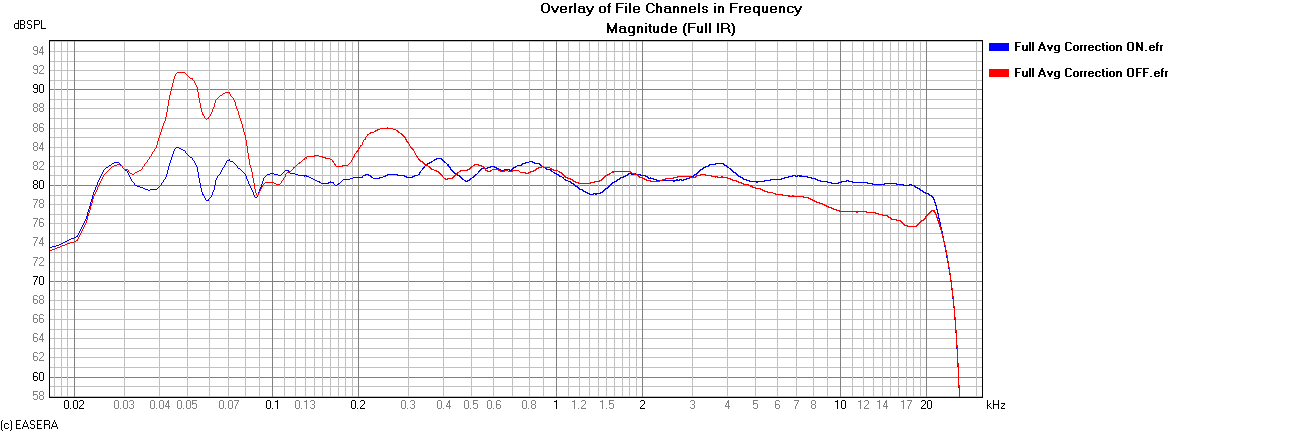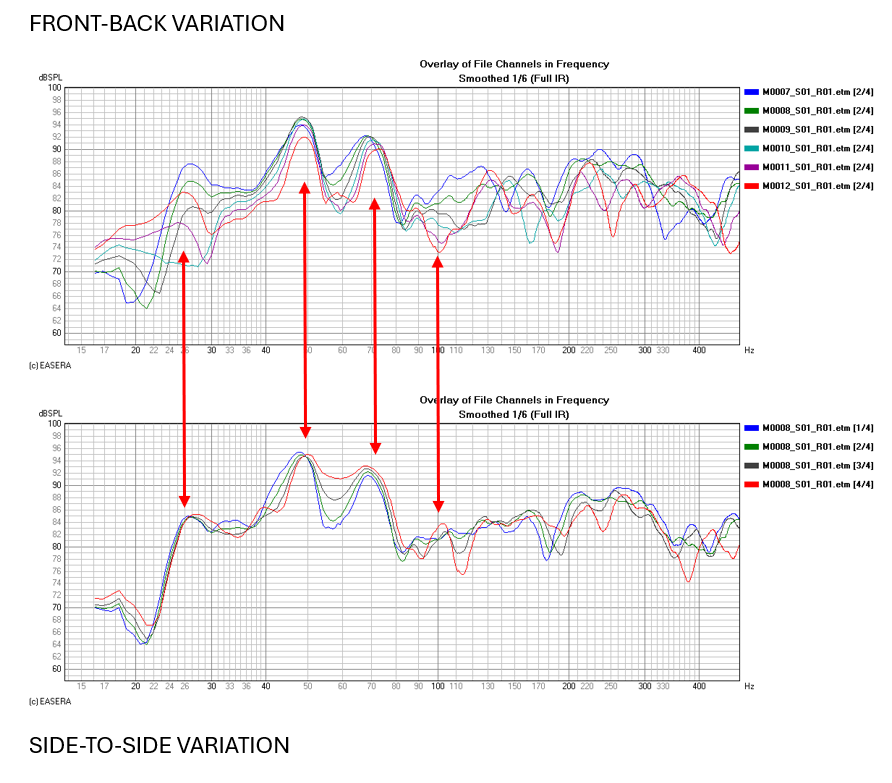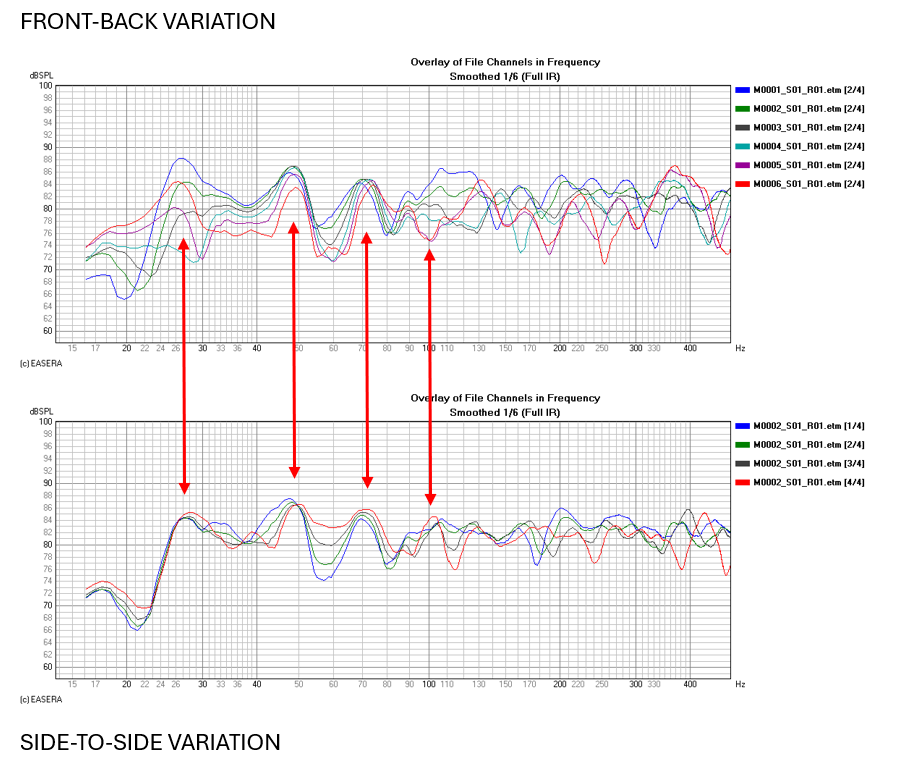FIGURE 1. Room frequency responses measured in a recording studio with room correction software turned ON (blue) and OFF (red).
A Client recently asked: “since I already have room correction software, do I still need room treatments in my listening space?”
Acousticians frequently specify sound absorbing and diffusing finishes to “treat” a room and improve its acoustics. However, DSP “room correction” software, readily available in both the hi-fi and pro audio markets, can also adapt a loudspeaker system’s performance to the room. What does room correction software really do, and does it eliminate the need for traditional room acoustics design?
We set out to explore this issue in a recording studio outfitted with Genelec studio monitors. This particular room has a roughly rectangular shape, but with slightly angled sidewalls and a gently sloped ceiling. The goal was to measure the room with and without room correction engaged, in this case using SoundID Reference from Sonarworks.
When calibrating SoundID Reference, the user is guided through a process to move a measurement mic through the listening area. The software automatically measures the in-room response and produces an averaged frequency response across the listening area. This curve is then used to determine a correction curve applied to the loudspeaker system output which gives a flat (or other desired target shape) system response in the room. The calibration process is simple and efficient!
After completing the SoundID Reference calibration process, we did our own measurements using EASERA, with and without the SoundID Reference correction curve enabled in the software. Results (averaged across 24 positions in the primary listening area) are in the plot in Figure 1: the blue line is with room correction and the red line is without.
Clearly, the room correction made the in-room system response much smoother, especially managing the prominent “bump” in the 50Hz region. The correction was no doubt a significant improvement, borne out also by critical listening with and without the correction curve enabled. However, even the corrected in-room response curve is not perfectly flat, especially in the subwoofer range. What is the reason for this result?
FIGURE 2. Low frequency frequency response curves with room correction OFF. Red arrows show calculated axial room length mode frequencies.
Room modes are determined by room dimensions (length, width, height) and are simple to calculate for rectangular rooms. In practice, room modes cause large variations of sound levels at different positions in the room. In this case, the prominent peaks visible in the curves at low frequencies correspond well to the theoretical locations of axial room modes along the room length (22’-6”) shown by the red arrows in the plots.
FIGURE 3. Low frequency frequency response curves with room correction ON. Red arrows show calculated axial room length mode frequencies.
Since the EASE measurement software enables multichannel measurements, we set up 4 mics in the room to look at the variation of the in-room system response both side-to-side and front-to-back. This multichannel measurement approach reveals more detail about the modal behavior in the room. Axial room modes between the front and back wall cause front-to-back level variations, while the modes between sidewalls cause side-to-side variations.
In the measurements with SoundID Reference correction turned OFF, the room mode peaks are prominent, and spatial variations are large (especially in the 25Hz and 100Hz regions). With the correction turned ON, the overall bass rise is reduced, but the resonances associated with the room modes are still present, and the spatial variation of sound levels is essentially the same! This is because the DSP-based frequency filter cannot change the underlying physics of the room modes responsible for these level variations.
So does room correction software work? Clearly it does! In this case it provided a real and audible benefit in the studio. However, it does come with some drawbacks. Many listeners object to the time-smearing caused by the frequency filters that can effect transients in the bass and lower midrange. Like any kind of system equalization, care must be taken and modest adjustments are usually best.
In our view, room correction is not a complete solution and does not eliminate the need for good room acoustic design. Room modes should still be managed with passive treatments. Loudspeaker placement will still greatly influence coupling to the room modes. A good balance of sound absorption and sound diffusion at mid and high frequencies is still needed. However, room correction is an extremely useful tool for making rooms sound better, and future improvements to this technology will only make it more effective and accessible.



